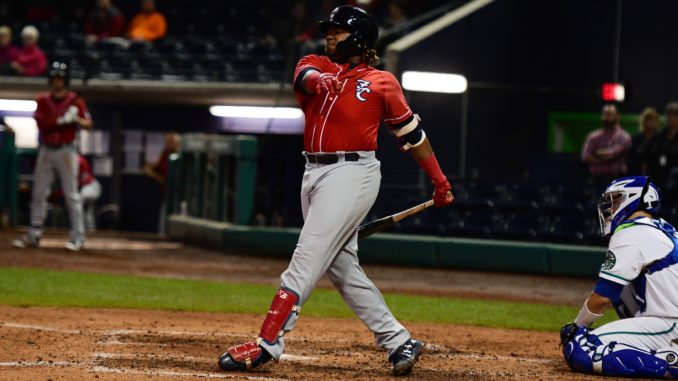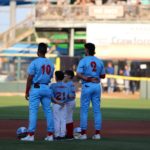
Who should be in charge of player development? Unfortunately, that is a serious question. In the past several seasons, a number of MLB teams have faced questions about whether they were being fair to their top prospects by delaying (determined solely by many in the baseball media) their MLB debuts.
While it is certainly understandable that people who make a living watching baseball would like to see the players they feel are the best and most exciting, their opinions are based more on that desire than on best practices in player development or on the best approach for each individual franchise to build a consistent winning team.
Let’s look more closely at the idea of allowing teams to make their own decisions about how to best put a team on the field that can win consistently over a long period of time. Many of the same people who complain about service time manipulation are also very much concerned about what they see as the tanking that is taking place around the major leagues. Their general theory is that teams are not really trying to win because there are players out there who go unsigned who could help those teams be better. Aside from the fact that there is (still) no assurance that simply spending money helps to win more games, what good would signing Dallas Keuchel have done for the Orioles? Could they have finished only 40 games out rather than 49? Not to mention that for every Dallas Keuchel (who was good but not great), there is literally a Craig Kimbrel (who spent his time in 2019 after he signed being either injured or ineffective).
So, what about the whole player development argument? Teams haven’t really helped themselves in that area when they aren’t specific about what they expect from an individual player that keeps him from being promoted to the major leagues. On the other hand, if they started airing that sort of thing publicly, there would be a whole new set of issues that many people would complain about, such as player privacy.
Let’s take a recent case in point. Vladimir Guerrero Jr. was the cause this spring as the casual observer class with a podium was convinced that he had ‘done everything he needed to do’ in the minors. This in spite of the fact that he had played in fewer than 280 games, amassing just over 1000 at bats, in his minor league career. Yes, he had hit for extremely impressive batting averages, but he had hit just 44 homers in four minor league seasons.
After an extremely disappointing rookie season, comparatively speaking, there have been several articles written about how Guerrero, Jr. didn’t hit enough fly balls in the majors to take advantage of his talent. What these articles consistently failed to point out is that his batted ball profile in the major leagues was remarkably similar to what he had done in the minors. He has always made more ground ball contact throughout his career. In the minors, with less pristine field conditions and lower quality defenses, more of those balls got through and became base hits. In the majors, though, that same kind of contact saw a significantly lower BABIP and the batting average evaporated somewhat. His HR/FB in the majors was slightly depressed, but well within the range of what he did in the minors.
All of this is in addition to concerns about his conditioning that seem to directly impact his defensive effectiveness.
Why, then, did the Blue Jays bring him up rather than let him work on his conditioning and bat path in a less pressurized environment? We can’t know that, but it is certainly likely that they felt like they had to in order to keep some goodwill with the player. When his agent and everyone with a byline is telling him he is good enough to play in the majors, it is sometimes difficult to believe the one voice you hear that says you still have some things to iron out.
We are living in the era of the hot take and when someone has one that gets them noticed, it tends to attract copycats. It gets a little wearying, though, when people without access to the information and processes that individual teams have and use try to tell us how much better they understand those processes and that information.
I live at the beach in Palm Coast, FL with my wife. I'm an old retired guy whose main job is hosting trivia shows at golf courses for which I get free golf at several upscale golf courses. When it rains and I can't play golf, I read about baseball and try to find the next underrated prospect.





What an insightful article. It really got me thinking.
Ultimately, learning and developing are life long goals. I know that sounds corny.
However, I think that players do having a learning curve at the MLB level. And when is a person as a player, as an individual mature enough mentally, emotionally, and physically ready to take on the challenge of being an MLB player?
Vlad jr. didn’t spend much time in the minors. But neither did Mike Trout, Bryce Harper, or Jose Fernandez.
Last season I heard our local broadcasters talk about how through the league, they’re seeing more and more players come up to the majors at younger ages. They Bert and Dick both agreed that, perhaps unlike the past, the kids could handle it and perform better. It echos a point that the commentators during the MLB draft had made. Hardold, I believe was talking about it.
And honestly, I think I’m in agreement there. Which brings up this great article.
And these questions… is it be driven more by popular or external expectations?
Is it a fad that is more detrimental to the player in the long run?
I don’t know. I see a lot of young stars Acuna, Soto, Lindor, Hiura and I gotta wonder if the risk isn’t worth it for the game overall if we get players like this energizing the game?
Hi Jesse, thanks for reading and for the thoughtful comments. I’d make two points in response to your final question. First, what if they don’t energize the game? What if they struggle and come up far short of expectations? Is it worth it to stunt the development of the guys who aren’t ready to make sure that everyone gets the shot when WE think they should?
Finally, this brings up the ultimate point of the piece. It’s not up to anyone outside the organization to make those decisions because we simply don’t know what all of the ancillary factors might be. We only know our biases and our preconceived ideas and our desire to see the guys we want to see. I understand your point about the game overall, but teams have to be concerned first for their organization, then about the development of their players and finally about the overall game.
I’m lucky. I’m retired and I can go see any player I want whenever I want, pretty much. Not saying I get crazy, but I spent a long weekend last summer five hours from home so I could see a series pitting Nolan Gorman against Wander Franco. If I want to see Jo Adell this season and the Angels decide not to have him start the season in the majors, I’ll go see him. It’s not up to me, though, to pretend I know better than the Angels about his development.
I’m not blind to service time manipulation. I am just convinced that it doesn’t happen in nearly as many cases as we like to pretend that it does.
Thanks again!